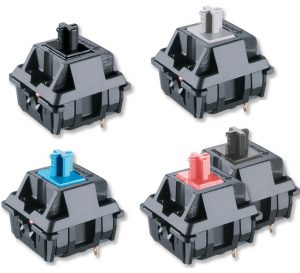Recognizing the Performance of Membrane Changes for User User Interface Devices
The capability of membrane layer switches stands for a significant development in customer interface layout, integrating performance with visual versatility. These switches operate via a multi-layered structure that converts user interactions right into electric signals, permitting both portable layouts and strength against ecological elements. As markets significantly focus on individual experience, understanding the subtleties of membrane button technology comes to be crucial. What implications do these innovations hold for future applications, and exactly how might they redefine customer interactions across different tools?
What Are Membrane Layer Switches?
Membrane layer switches are innovative user interface tools that assist in individual interaction with electronic tools. These flexible parts include several layers, consisting of a visuals overlay, spacer, and a printed circuit layer. The layout permits a seamless assimilation into various electronic gadgets, improving both the aesthetic and useful aspects of user interfaces.
Membrane layer buttons are frequently used in a variety of applications, from house home appliances to industrial equipment and medical devices. Their building usually includes a thin profile, making them an optimal choice for small layouts. The responsive comments given by these buttons can be crafted to satisfy particular customer choices, guaranteeing effective interaction in between the individual and the device.
Durability is another substantial advantage of membrane layer buttons, as they are immune to dust, dampness, and chemicals, which boosts their life-span popular atmospheres. Additionally, these buttons can be customized in terms of shape, size, and graphic style, permitting branding and user-specific features. Overall, membrane layer switches over represent a practical remedy for improving customer experience in digital devices, incorporating functionality with visual appeal in a reliable way.
Exactly How Membrane Switches Over Work
Operating on an uncomplicated principle, membrane layer changes make use of a split building and construction to sign up customer input efficiently. Each button includes multiple layers, including a printed circuit layer, a spacer layer, and a leading visuals layer, which are created to collaborate effortlessly. When a user presses the top layer, it compresses the spacer layer, bringing the conductive components of the circuit layer into call with each other.
This contact produces a shut circuit, signifying the gadget to implement a particular feature. The layout enables different setups, consisting of responsive feedback, which can boost the user experience by providing a physical sensation upon activation. The products made use of in membrane switches usually consist of adaptable substratums, such as polyester or polycarbonate, which ensure toughness and resilience versus wear and tear.

Trick Advantages of Membrane Switches

An additional considerable advantage is their compactness. Membrane layer switches are slim and lightweight, which enables producers to save space in their gadgets without giving up functionality. This attribute is especially advantageous in applications where weight and quantity are essential factors to consider.
Additionally, membrane layer buttons are resistant to dirt, moisture, and chemicals, boosting their longevity. This resilience expands their life-span and decreases the demand for regular substitutes, causing price financial savings gradually.
Additionally, the tactile comments given by membrane buttons can be enhanced to enhance individual interaction. They can include functions such as raised buttons or distinct clicks, improving functionality and individual experience.
Applications Across Industries
Interface gadgets making use of membrane buttons are widespread in a broad variety of sectors, showcasing their adaptability and performance. Membrane Switch. In the clinical sector, membrane layer switches are essential to gadgets such as analysis tools and patient tracking have a peek here systems, where their toughness and ease of cleaning are crucial for maintaining health requirements. In the vehicle sector, these buttons are utilized in control panel controls and infomercial systems, supplying a streamlined and modern-day interface for users.
In addition, the customer electronic devices market advantages from membrane layer buttons in devices and handheld gadgets, where portable style and easy to use user interfaces improve customer experience. Industrial applications additionally leverage membrane layer switches over for control board in machinery and automation systems, stressing their effectiveness and resistance to harsh atmospheres.
In the aerospace and defense markets, membrane layer buttons are made use of in cockpit controls and tools, where integrity and performance under extreme problems are paramount. Furthermore, the gaming sector significantly incorporates membrane switches in controllers and arcade makers, contributing to an appealing individual experience. In general, the versatility of membrane switches allows their extensive usage across many markets, underscoring their significance in contemporary interface design.
Future Patterns in Membrane Layer Switch Technology

Furthermore, using sophisticated products, such as polycarbonate and polyester movies, is anticipated to climb, offering enhanced durability and resistance to ecological stressors. These materials add to the general long life of membrane buttons, making them suitable for harsher industrial applications.
Additionally, the consolidation of wise technology, including IoT connection, will certainly enable membrane layer switches to interact with various other devices and systems, facilitating a more interactive individual experience. This pattern lines up with the expanding need for clever tools across various sectors, from medical care to customer electronics.
Finally, personalization alternatives are prepared for to expand, enabling makers to create bespoke solutions tailored to particular customer demands and preferences. These growths will certainly position membrane layer switches as necessary elements in the advancement of interface modern technology.
Conclusion
To conclude, membrane changes stand for a pivotal advancement in interface innovation, using a dependable and flexible service for varied electronic applications. Their layered building and construction facilitates portable style, while functions such as tactile feedback improve customer interaction. The resilience against environmental elements better strengthens their energy across numerous sectors. As developments in material science and touch sensing modern technologies continue, the performance and applicability of membrane layer switches are anticipated to expand, reinforcing their significance in contemporary digital gadgets.